The Internet of Things (IoT) is one of those mind-boggling concepts, the scale and implications of which can be difficult to comprehend. At its core, it will involve billions of connected devices and sensors, all sharing data, supposedly making our lives better. Exactly how this will happen is still a matter of debate though, and there are several concerns over how the technology will be delivered, as well as how to make sense of the torrents of data these devices will produce.
The lines between industry and tech are becoming ever more blurred
When the internet first started gaining major traction in the early 1990s, naturally it was tech companies that led the innovation. Today, the lines between industry and tech are becoming ever more blurred, with companies such as Google making waves in the automotive market, and manufacturers moving towards ‘smart’ factories and supply chains – commonly referred to as Industry 4.0.
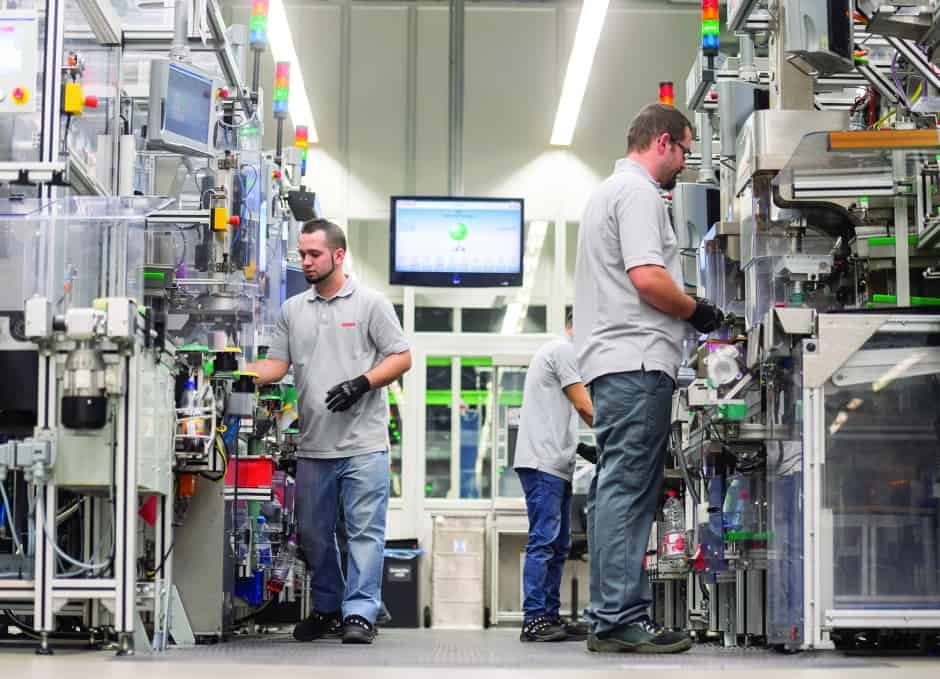
This blurring of two worlds promises to be a hallmark of the IoT revolution: the physical and the digital melding together, connecting not just people, but also everything around us with which we interact. According to the soothsayers, the result will be a network with many billions of nodes including autonomous vehicles, orbiting satellites, factory machinery, smart homes and connected power grids.
Bosch is currently testing smart solutions across many of its production plants around the world
While the possibilities appear almost unlimited, up until now mainstream IoT applications haven’t moved much beyond controlling a dimmer switch with your smartphone. Hype and conjecture have been the order of the day, and questions abound on security protocols and power requirements, as well as the new types of interfaces and standards we will use to integrate the real and virtual worlds. However, solutions to these problems are emerging and the potential is gradually being unlocked.
One company looking to lead the way is German manufacturing giant Bosch. With business units dedicated to mobility, buildings, energy, industry, and consumer goods, its portfolio is tailor-made to ride the IoT wave. Bosch is currently testing smart solutions across many of its production plants around the world, establishing best practices and learning through trial and error. According to Dr Werner Struth, Bosch
board member and head of industrial technology, these in-house deployments will form the basis for third-party solutions in the future.
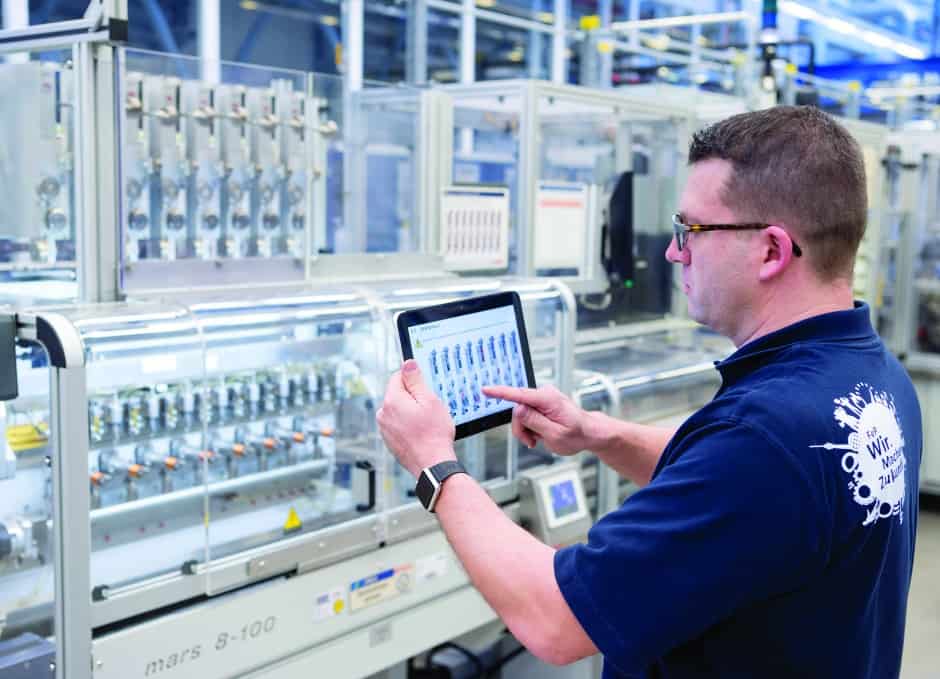
“We now have 276 factories,” Struth told The Engineer on a recent visit to Bosch’s Stuttgart headquarters. “There’s a huge bandwidth in manufacturing systems, from semiconductor light manufacturing in our Renningen factory, producing billions of sensors a year, to single-piece production of our Rexroth equipment, for example in the new elevator in the Eiffel Tower, or for the Panama Canal [expansion].”
Bosch develops IoT solutions and apps for these various business strands internally, then sends them out to its factories for testing. Only once they are mature will they become available to external customers. The manufacturing facilities at the heart of the company for 130 years have now also become the test beds for the Industry 4.0 architecture of tomorrow, and Bosch sees itself as both a major user and supplier of connected solutions moving forward. “Now we have our own platform from which we can sell these solutions,” said Struth. “It’s a very holistic perspective that we take on connected industry.”
In total, 150 solutions have been trialled, and many of those are now being rolled out across the company, with plans to make them available to customers over the course of the next 12 months.
“Of the 150, we have 28 that we are developing on a standardised basis for the entire group,” said Struth. “These applications will be available for external customers by 2017. The cloud that we have is currently for internal purposes only, just to get a refinement.”
Among the first solutions available will be TraQ (Track Quality), a logistics application that uses embedded sensors to provide real-time information while goods are being transported. Readings for temperature, vibration, light and humidity can indicate whether sensitive goods such as semiconductors are travelling in optimum conditions. Deviation outside pre-set limits can trigger alerts, and notification of any damage could help minimise impact downstream in the supply chain.
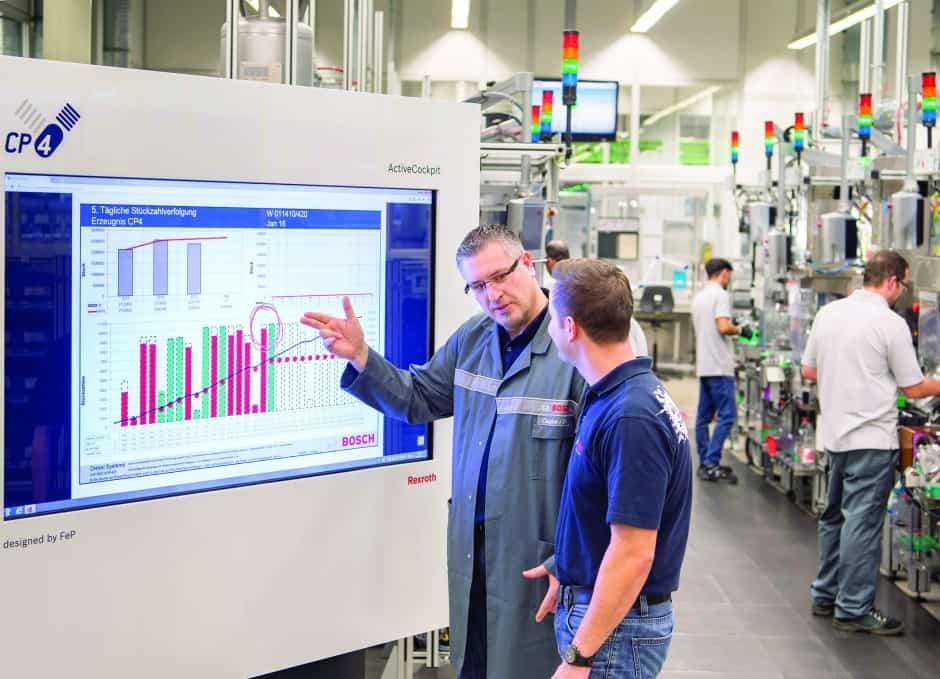
Unsurprisingly, Bosch is also working on solutions to improve factory operations, its Process Quality Manager being one example. Data from machinery is analysed in real time, notifying workers of potential problems and allowing for predictive maintenance to be carried out. A similar platform for production and building management is also in development, where energy requirements such as heating, cooling and hydraulics can all be viewed and managed centrally.
The XDK kit will be a “midwife” for a host of new Industry 4.0 applications yet to be conceived.
Perhaps the product with the greatest potential is Bosch’s XDK development kit. This is a combination of sensors and software with Bluetooth and WiFi connectivity that users will be able to tailor to their own needs, creating unique IoT offerings. The package will include an acceleration sensor, a yaw-rate sensor and a magnetometer, as well as temperature, pressure, humidity, noise and light sensors. According to Bosch, the XDK kit will be a “midwife” for a host of new Industry 4.0 applications yet to be conceived.
“We have sensors, we have software and we have services,” said Struth. “That from our perspective is somehow unique at Bosch.”
Services and software can be hosted centrally and distributed via the cloud, but sensors obviously need to be at the point where you want to collect sensory data. When those sensors are attached to machines in a factory or a vehicle, power requirements are not really an issue. But what about sensors with no freely available power source? What if you want to set up a network of temperature sensors throughout a building, for example, or a motion sensor in a remote corner of an industrial space?
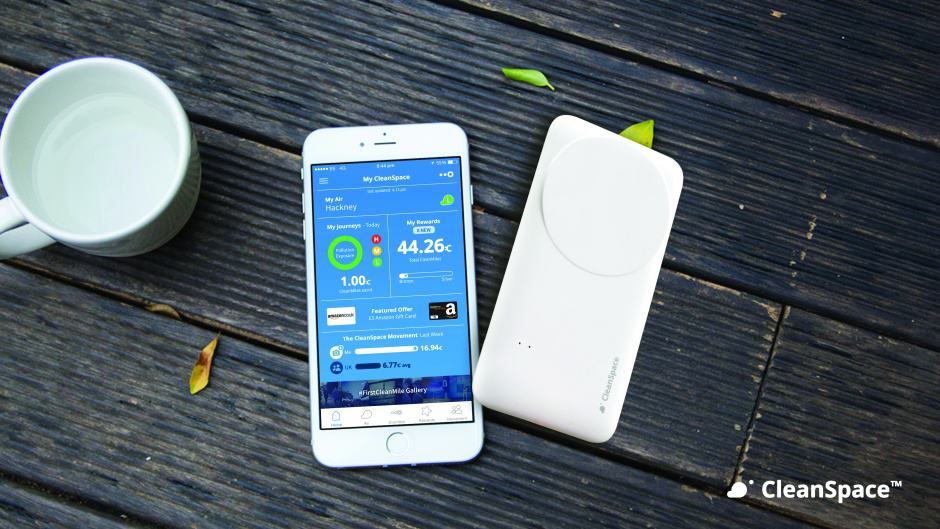
Low-energy sensors like this can of course be powered by battery, but in a future where billions of these devices exist, swapping them out would be the mother of all Sisyphean tasks. An alternative solution has been engineered by Drayson Technologies, the company founded by the Labour peer and amateur racing driver Paul Drayson. Last year it unveiled its Freevolt technology, a rectifying antenna that harvests residual radio frequency (RF) energy from transmissions over networks such as 4G and WiFi. By converting these transmissions into electricity, it can keep them operating indefinitely.
Radio frequency waves are being generated all around us, at different levels, all the time. Some of this wireless energy goes unused.
“Companies have been researching how to harvest energy from WiFi, cellular and broadcast networks for years,” said Drayson. “But it is difficult because there is only a small amount of energy to harvest and achieving the right level of rectifying efficiency has been the issue until now.
“Whether we live in a big city or an increasingly urbanised area in the developing world, radio frequency waves are being generated all around us, at different levels, all the time. Some of this wireless energy goes unused. At Drayson, we’ve figured out a way to make it useful.”
We saw the first commercial application of Freevolt with the CleanSpace Tag, a carbon monoxide sensor powered by the technology. When paired with a smartphone over Bluetooth, the tag can track the air quality, with a map highlighting potential black spots on your daily commute. Collating data from all the CleanSpace users in a particular area allows a real-time picture of air quality throughout a city to be drawn up, which anyone can access.
CleanSpace is a great example of what Freevolt can do, and also of the potential that the Internet of Things has to fundamentally impact our lives. But much like Bosch’s XDK sensor kit, Freevolt’s real power will inevitably come from developers who devise ingenious ways to use it, acting as another “midwife” for the creativity of customers. According to Drayson, tech companies are keen to get their hands on the technology to see what it can do.
“For designers and developers, Freevolt offers a totally new approach to powering the low-energy Internet of Things,” he said. “Since the launch at the end of September, we have been inundated with requests from thousands of leading technology companies and innovators to become part of our developer programme.”
Whereas Freevolt is designed to sustain low-energy sensor networks with a minimum of human interaction, there are also IoT applications where humans and machines will be able to interact in entirely new ways. At its recent LiveWorx event in Boston, US software company PTC showcased how it envisages augmented reality (AR) becoming a tool for bridging the worlds of the physical and digital, worlds that are becoming increasingly blurred as technology becomes embedded in almost everything.
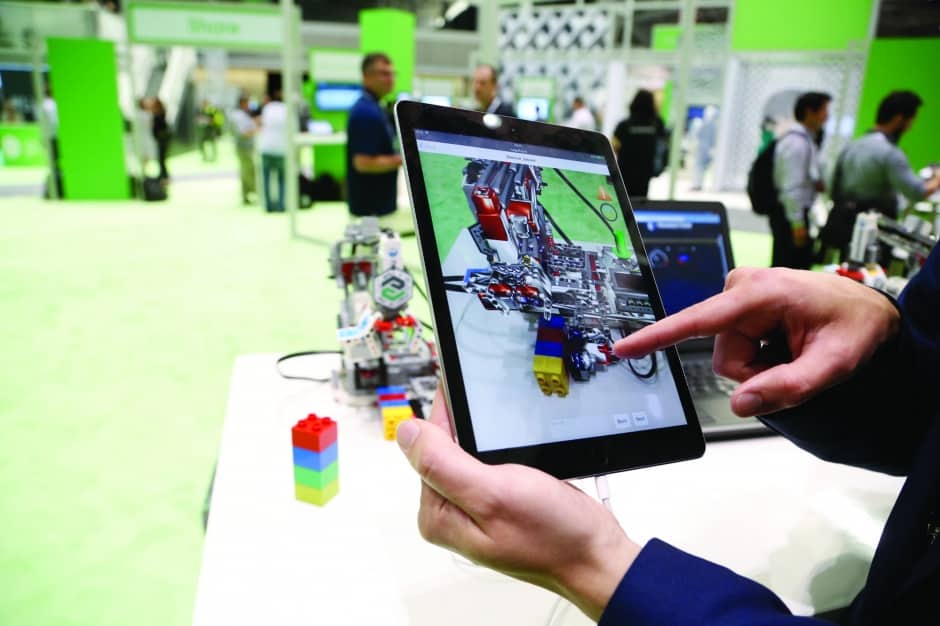
“We’re in the midst of a fundamental transformation in our world, and in our relationship to the things that are all around us,” said PTC CEO Jim Heppelmann. “The things I’m talking about are the things that we create, that we operate, that we depend on, that we entertain ourselves with. They’re all evolving from being relatively simple physical objects, to becoming complex physical/digital systems.”
“Everything from your watch, to your car, to your home, to your factory, to the infrastructure of the city you live in, is headed down this path… the notion of physical/digital convergence must expand to incorporate the way that humans experience products, and that’s why [we’ve] spent so much time and energy pursuing augmented and virtual reality in the past year.”
Launched at Liveworx, Vuforia Studio Enterprise is PTC’s platform for creating these AR experiences. Designed to work with a range of 3D modelling tools, Vuforia allows users to publish animated AR sequences to instruct or inform. It operates in tandem with the company’s ThingWorx IoT platform to add an AR component to connected machines, from manufacturing and factory equipment to solar panels and medical devices.
On stage in Boston, Heppelmann and Terri Lewis, Caterpillar’s digital and technology director, demonstrated how AR could work in an industrial environment. Using a connected Caterpillar generator set, the pair showed how a handheld tablet could provide an AR overlay on the equipment, providing step-by-step guides for operation and maintenance.
“When our customers rent our products, they want to make sure it can run,” said Lewis. “They want the whole experience of rental to be easy… They can also connect remotely to the product, understand where it’s at, know whether it’s being used and if it’s ready to be used.”
Caterpillar is working with PTC on a Beta version of Vuforia, and the live demo showed that AR could have a role to play in this new connected world that is evolving. But this connectivity also raises concerns over security. A generator set that can be controlled remotely is a powerful piece of equipment that could also be hacked remotely.
Security is one of the issues most frequently raised whenever IoT is discussed. According to Gartner, more than 20 billion devices will be connected by 2020, by which point it expects more than 25 per cent of all attacks on enterprises will come via IoT. If every device is a potential weak point, IoT technology will inevitably be held back in some areas.
One possible solution gaining traction is blockchain, the self-regulating, decentralised technology that underpins cryptocurrencies such as Bitcoin. For Bitcoin, blockchain acts as a sort of ledger where money/value can be transferred securely and anonymously across a distributed peer-to-peer network. Every transaction adds a new ‘link’ to the chain, and the collaborative network of users authenticates each transaction in an automatic, auditable and transparent way.
Recently, however, blockchain’s potential for other uses has begun to be explored, and one of the most exciting areas is with IoT. Blockchains could be used to keep ledgers of data exchanges between devices, applications and humans, underpinning transactions and adding a much-needed layer of security.
But blockchain’s potential goes way beyond security.
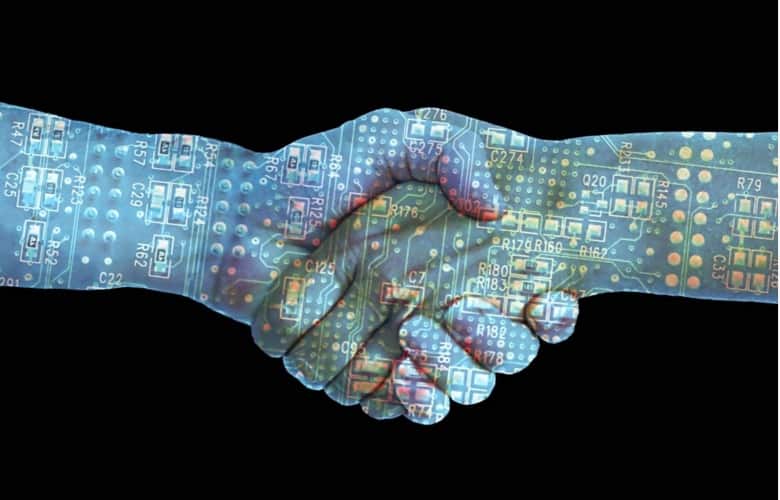
It could act as the catalyst for devices to become truly independent, performing what are known as ‘smart contracts’: self-executing protocols carried out by connected machines. Imagine if a vending machine could not only monitor and report its own contents, but also request bids from suppliers and automatically release funds once restocked. What if a network of home appliances could coordinate their workload in order to take advantage of reduced energy costs?
The huge potential has prompted companies such as IBM, Dell, Microsoft and Samsung to explore blockchain technology and the role it could play in IoT. But the road ahead will certainly not be straightforward. An organisation holding Ethereum, described by some as a Bitcoin 2.0 with smart contract capability, recently had roughly US$50m stolen through an organised attack, sending the price of the currency tumbling. The attack led to something of a crisis regarding Ethereum's future direction, with users eventually voting in favour of a "hardfork" in the underlying code. This will return the the hackers' ill-gotten gains to the original owners, while also securing against future attacks. What initially looked like a disaster for Ethereum may yet prove to be a successful rescue mission, and could perhaps even be a bellwether for a future where blockchain users can come together and fix issues democratically - something Bitcoin has struggled to do.
Hacks such as these might slow blockchain’s infiltration of IoT, but it seems inevitable that the technology will play a fundamental role in the internet’s next stage. As billions of devices come online, blockchain could well be the final piece of the puzzle needed to unlock IoT’s true power.


JLR teams with Allye Energy on portable battery storage
This illustrates the lengths required to operate electric vehicles in some circumstances. It is just as well few electric Range Rovers will go off...